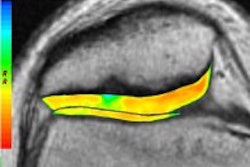
The radiologist's role in patient care is changing, and it is vulnerable. The digitalization of radiology, especially PACS, provides new options for both radiologists and hospital administrators. For radiologists and radiology as a specialty to survive, radiologists must provide a valuable service and be an invaluable part of the hospitals' mission and goals.
Radiologists have always been at the hub of healthcare delivery and are integrally involved with patient management decisions and quality care. They have consistently had a patient-centered focus and work intimately as consultants and caregivers with referring physicians and hospital administrators, although radiologists are typically not recognized by patients as being involved with their care or even as being physicians.
Today, more than ever, radiologists must manage relationships with hospital administrators, referring physicians, patients, and payors, as well as become more visible and vocal in advocating the value they provide to patient care.
Radiologist perspective
Burdened by the administrative responsibilities of private practice, physicians are often attracted to the resources that hospitals offer. More doctors are currently seeking hospital employment because they envision that quality of life is better with a manageable work week and job security.
Radiologists now have more opportunity to work part time, be hourly workers, and utilize job-share options. Many radiologists are refusing jobs that require them to be on call, with the expectation that teleradiology will be enlisted to provide coverage during unpopular time slots, e.g., nights and weekends.
 Dr. Helene Pavlov.
Dr. Helene Pavlov.
For physicians in general, but especially radiologists, hospital employment is viewed as a safe zone against the implementation of costly changes in insurance and healthcare reform. Reimbursement for healthcare services, especially imaging services, is currently in transition from payment for tangible services, e.g., an x-ray exam or a procedure performed under image guidance, to intangible expectations of controlling inappropriate imaging and unnecessary procedures that do not negatively affect quality.
Hospital employment also eliminates the mandatory investment in healthcare information technology and high malpractice insurance premiums that would be covered by the hospital. Hospitals are also usually able to negotiate health plan contracts on behalf of employed physicians for higher fees and with higher reimbursement than independent physicians could negotiate on their own. These concerns and uncertainties make a hospital salary appear more secure and desirable than private practice.
Hospital perspective
Hospital administrators are also changing the way they evaluate radiology and radiologists. Administrators are seeking to quantify service with increased efficiency, process improvement, and cost management. They often believe that radiologists are replaceable; there are "cheaper virtual teleradiology options" for image interpretation, given that the geographic location for interpreting images is no longer an issue.
Interventional radiologists are also not immune as other specialties -- such as cardiologists, physiatrists, rheumatologists, orthopedic surgeons, gynecologists, etc. -- are increasingly performing procedures using image guidance to compensate for decreasing reimbursements and their bottom line. These nonradiologist clinicians often believe that they are competent to perform and justified to bill for these imaging procedures. Unfortunately, ionizing radiation safeguards for their patients, their assistants, and themselves, not to mention validation of their diagnostic acumen, can be, for some, of secondary concern.
Patient care -- integration or control?
Hospital administrators, insurers, and physician-hospital integration designers, as well as physicians, realize that patients can be directed to less-expensive and possibly less-than-optimal quality service for image acquisition and/or interpretation. On paper, this cost-saving model is a "no brainer," especially if the patient either improves or dies. If the patient does not improve under this model, however, healthcare costs will escalate.
Healthcare is most cost-efficient when a preventable condition is identified as early as possible via expert attention. When diagnosis is delayed and patients do not receive appropriate treatment or diagnosis early enough, their condition may deteriorate and become more difficult and expensive to treat. In addition, prolonged unnecessary angst and suffering can result in patients losing unnecessary and excessive time from work and becoming less able to contribute to society.
The expectation is that hospital-employed physicians will improve quality and efficiency through better clinical integration. Hospital-physician integration will be tested by the accountable care organization (ACO) model.
Hospitals typically employ physicians to gain market share through increased admissions and lucrative outpatient fee-for-service diagnostic testing, i.e., services that reward volume. More recently, hospitals have been employing physicians to prepare for expected Medicare payment reforms, including bundled payments, ACO models, penalties for preventable hospital readmissions, and payment reforms that shift "pay-for-procedure" to "pay-for-performance" methodology.
Providers, physicians, and hospitals are being held more accountable for the cost and quality of patient care. Patterns, however, do not change overnight, and until payment reforms create an incentive process for providers who achieve efficiencies and higher quality, hospitals and their newly employed physicians will continue to practice as they are accustomed, with volume-driven fee-for-service incentives.
Also, as hospitals routinely charge outpatient facility fees, the new provider-based status of previous private practice physicians will have higher Medicare payments for physician visits, resulting in higher costs for both payors and patients. Therefore, initially, costs will likely increase while quality metrics are still a work-in-progress to be defined later.
Awareness and action
To ensure their survival, radiologists must provide performance and service that exceed patients' and referring physicians' expectations. Radiologists need to network proactively so they are recognized as consultants with imaging expertise for which they have been trained.
They must be able to answer clinical questions accurately for subspecialized clinicians and participate in, if not initiate, clinically relevant research. Radiologists need to understand and accept increased service and new accountability expectations. Phrases such as "clinical correlation is suggested" must be avoided. Maintaining a high level of quality assurance, accuracy, and trust is imperative.
Justification for employment of radiologists is linked to these value-added services, in addition to critical value reporting, capital resource management, and contributing to a decrease of inappropriate utilization.
Hospital administrators need to recognize proactive efforts to eliminate unnecessary exams and procedures that do not compromise patient quality, and they need to determine incentives so this activity is appropriately rewarded; radiologists should not be penalized for proactive accountability.
Radiologists need to participate and be part of leadership and governance so they can educate hospital administrators and referring clinicians of appropriate performance and service metrics in addition to quality metrics. Hospital administrators need to have feedback from their referring physicians and the patients about the direct value imaging and radiologists have in patient treatment decisions. The challenging part is that these and other quality metrics are essentially intangible and hard to define.
To make "employment" more palatable to physicians and increase physician loyalty and optimally improve the clinical effectiveness of care, improve efficiency, and help control costs, hospital administrators are beginning to "partner" with physicians by giving them a larger leadership role in governance and management. A true partnership, however, is a two-way agreement and alignment. There needs to be a degree of independence between hospitals and physicians because patients expect that their physicians, particularly radiologists, remain patient advocates, not organizational advocates.
Radiologists must also be cautious. After alignment and partnering with hospitals, a logical next step is for hospitals to gradually phase in an annual decline in salaries and benefits for employed physicians.
Radiologists must heed the path being taken both individually and as a specialty. Salaries can be significantly reduced and salary reduction is easily justified if the radiologist insists on part-time employment and easy hours without call, and essentially asks to be treated as an hourly worker. Without visibly evident value-added work product and proactive steps toward leadership roles in their hospital, the future for radiology and radiologists will be in jeopardy.
Dr. Helene Pavlov is the radiologist in chief at the Hospital for Special Surgery in New York City. She is a board-certified radiologist specializing in orthopedic radiology since 1976.



















